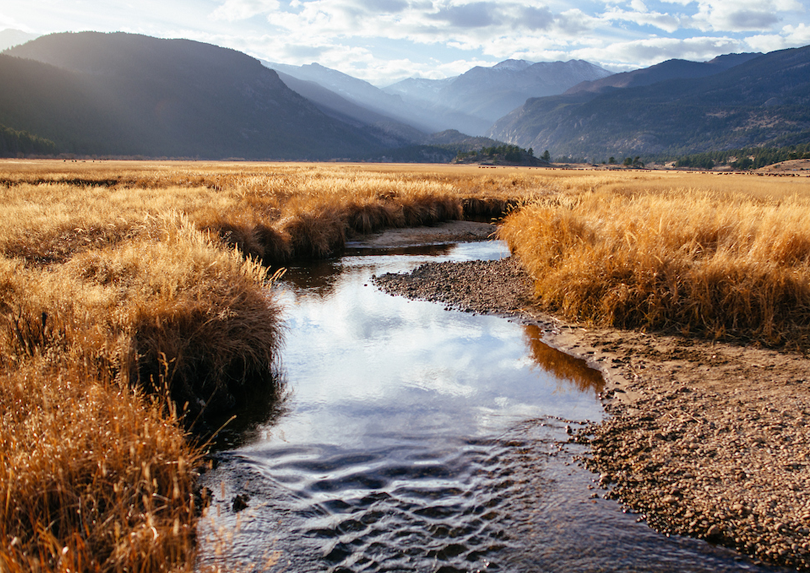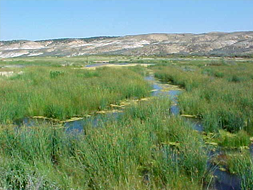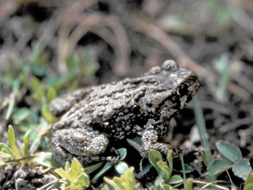
What Is It?
The
U.S. Environmental Protection Agency (EPA) defines wetlands as “areas where water covers the soil, or is present either at or near the surface of the soil all year or for varying periods of time during the year, including during the growing season.”
Riparian zones are specifically the areas alongside a river or stream. These conditions support a unique set of wildlife species.
What Are Some Examples?
 Playas - These are ephemeral in nature, filling with water only after heavy rainfall. Playas are very important habitat components for many species that inhabit or migrate through Colorado.
Playas - These are ephemeral in nature, filling with water only after heavy rainfall. Playas are very important habitat components for many species that inhabit or migrate through Colorado.
Riparian woodlands and shrublands - At montane to subalpine elevations, riparian shrublands may occur as narrow bands of shrubs lining streambanks and alluvial terraces, or as extensive willow carrs in broad floodplains and subalpine valleys. They can also be found around seeps, fens, and isolated springs on hillslopes away from valley bottoms. At lower elevations on the Western Slope, riparian woodlands and shrublands are found within the flood zone of rivers, on islands, sand or cobble bars, and immediate streambanks.
Wetlands - In Colorado, non-riparian wetland habitats include moist to wet meadows, emergent marshes, fens, and seeps and springs. Natural wet meadows are tightly associated with snowmelt or subsurface groundwater discharge, and are typically not subjected to high disturbance events such as flooding.
Learn more about these habitats in
chapter 3 of the 2015 SWAP.
What Species Depend On This Habitat?
Some of Colorado’s most fragile species, including the
boreal toad and the Preble’s meadow
jumping mouse, rely on riparian and wetland habitat in order to survive. These landscapes are also home to
whooping cranes, snowshoe
hares, and
checkered whiptails, and they can also provide the necessary connections that assures secure habitats for aquatic species.
What Challenges Does This Landscape Face, and What Is CPW Doing?
 This habitat type relies on water levels, so it is extremely responsive to drought, dams, groundwater depletion and water management initiatives. CPW strives to mitigate negative effects of these through habitat restoration and conservation easements. We also utilize area management processes and best management practices to overcome the obstacles posed by roads and trails as well as oil and gas drilling.
This habitat type relies on water levels, so it is extremely responsive to drought, dams, groundwater depletion and water management initiatives. CPW strives to mitigate negative effects of these through habitat restoration and conservation easements. We also utilize area management processes and best management practices to overcome the obstacles posed by roads and trails as well as oil and gas drilling.
Invasive species such as Russian olives can have a severe impact on riparian and wetland habitats. CPW’s
Invasive Species Program and
Resource Stewardship section address these issues by raising awareness and mitigating the spread of these nonnative species. In fact, Resource Stewardship recently got rid of all of the Russian olives at
Barr Lake State Park!

